Hey everyone,
And happy spring! We hope you’r just as excited as us to rotate the garden into summer crops. Our winter served very well on leafy greens, broccoli, cauliflower, beets, and the occasional monster carrot. Still we miss our tomatoes and peppers and look forward to a change in our meal plan.
Right down to it.
I recently took a very non-structured fancy free approach to creating seed starter mix to get a start on seedlings. Frankly, even I have mixed opinions about starting from seeds for the purpose of saving money. It takes a little coddling, attention, SPAAAACE, and those seed packets aren’t entirely cheap if your garden goal is to have a variety of different plants and vegetables. If you’re like me here’s what you’ll buy:
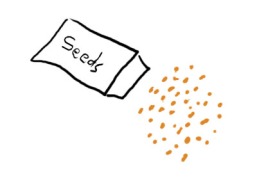
And here’s what you’ll use:

To ultimately plant this:
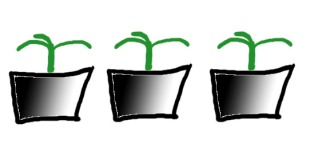
Big on variety here. Prefer to have many different plants. Any season I can have six different kinds of peppers, and 10 varieties of tomatoes. Sometimes buying seeds is the only way to get the plant that you want. Seed starter mix had been tricky for us over the years. You can buy seed starter mix for ~$8 at a hardware store, and it’s corresponding specialized formula fertilizer. But in addition to costing a lot (you need more than one bag) you don’t feel sustainable using it (both the plastic bag, and it uses peat moss which is not sustainable). And as usual we just like doing things ourselves.
SEED STARTER RECIPE WE USED:
Little disclaimer here-Online you can find way more effortful and possibly better seed starter mixes, which include uncommon household items like perlite and vermiculite. But this is what WE used this year, and frankly it worked very well.
- Coconut Coir-almost 50%
- Compost, homegrown-~30%
- Potting Soil (which we happened to have lying around, and this tends to have perlite, vermiculite, sphagnum, etc.)-~20%
Another disclaimer. We didn’t fret too much over the ratios. The coconut coir retains the moisture, the potting soil helps with the fluff, and the compost is the plant food. I’ve made this without potting soil and it work OK too.
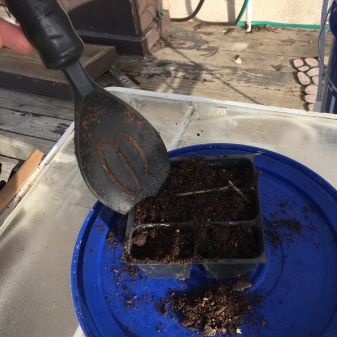
Homemade seed starter – mix thoroughly with a spatula.
THE TERRARIUM – INDOOR SEEDLING GREENHOUSE
Equipment:
- tank – terraium or aquarium, used – big enough for a standard seedling tray
- heating pad
- fluorescent light
- foil
- some form of clear plastic cover
- seedling tray
- seedling pods
Sadly my pet lizard from when I was twelve years old is no longer with us and this is the only memorabilia I have to remember him by:
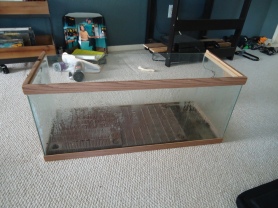
And as much as I prefer to live off the sun , sometimes you just can’t. Seedlings want to be warm, and technology is the answer, You really want to start when it is still too cold outside – Jan/Feb
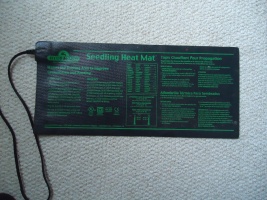
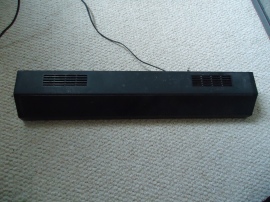
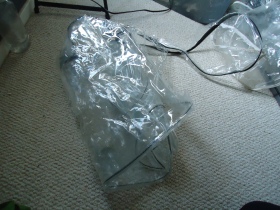
A clear plastic bag we had leftover. You can place this on top to hold in moisture and heat
Honestly I am not positive how well the foil helps. It supposedly will reflects the light and thus add more light. It’s a pretty low effort add on that hasn’t caused me any problems so I’ve kept it.
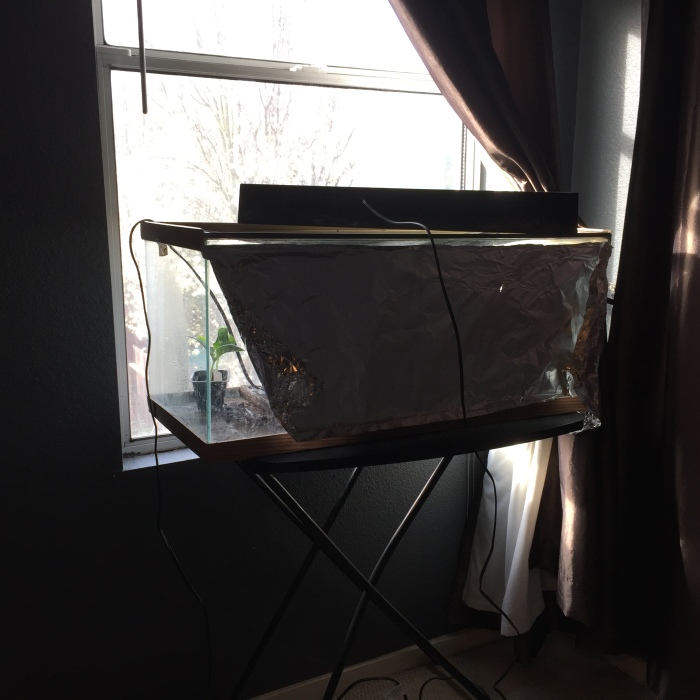
PLANTING AND LABELING
Set yourself up for success. Those seeds aren’t going to last forever anyway. Place 3 or so in a pod when ultimately you’re going to thin it down to one plant.
While it was still winter I kept this in the bedroom and it actually helped keep the room a little warmer.
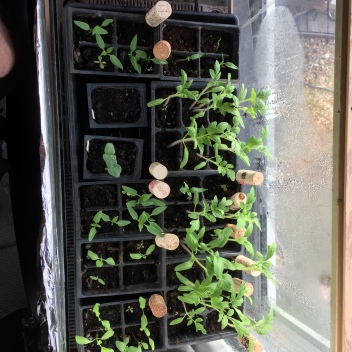
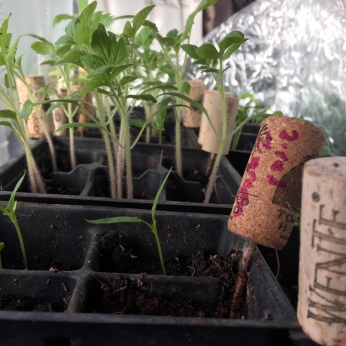
TROUBLESHOOTING
- Won’t germinate/sprout – too cold, seeds buried too deep, not enough water, soil mixture too dense.
- “Leggy” seedlings – not enough light, or possibly the seed mixture was too dense
- Things have sprouted but won’t continue to grow – too cold, not enough “food” or light
All this is fine, you’re reusing a seedling pod instead of buying a new one, and it technically is a little bit cheaper.
It can be time consuming, and frustrating at first when you don’t have conditions right. Here’s my decision tree for buying seeds vs buying plants:
WHEN TO USE SEEDS:
- When you’re planting a lot of the same small plants (often leafy greens, lettuces, mustards, carrots, beets, kale)
- When the plant you want isn’t available in the store
- If germinating plants from seed gives you a sense of pride and joy.
WHEN TO JUST BUY THE PLANT AT THE NURSERY:
- When you only want 1 or two plants (hot peppers, or one variety of tomato)
- If you’re starting late.
- If time and energy outweigh your desire to save $$
–J
